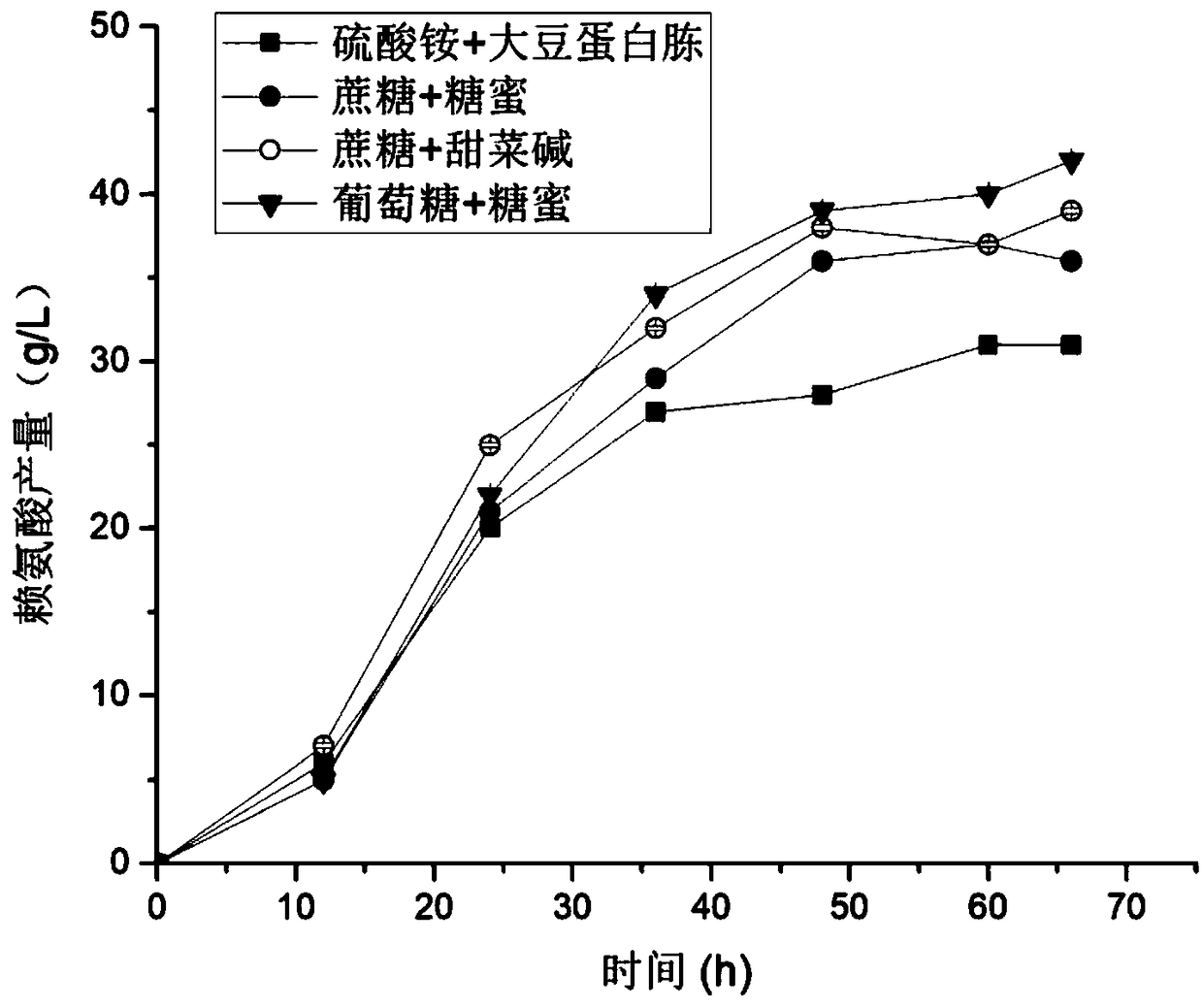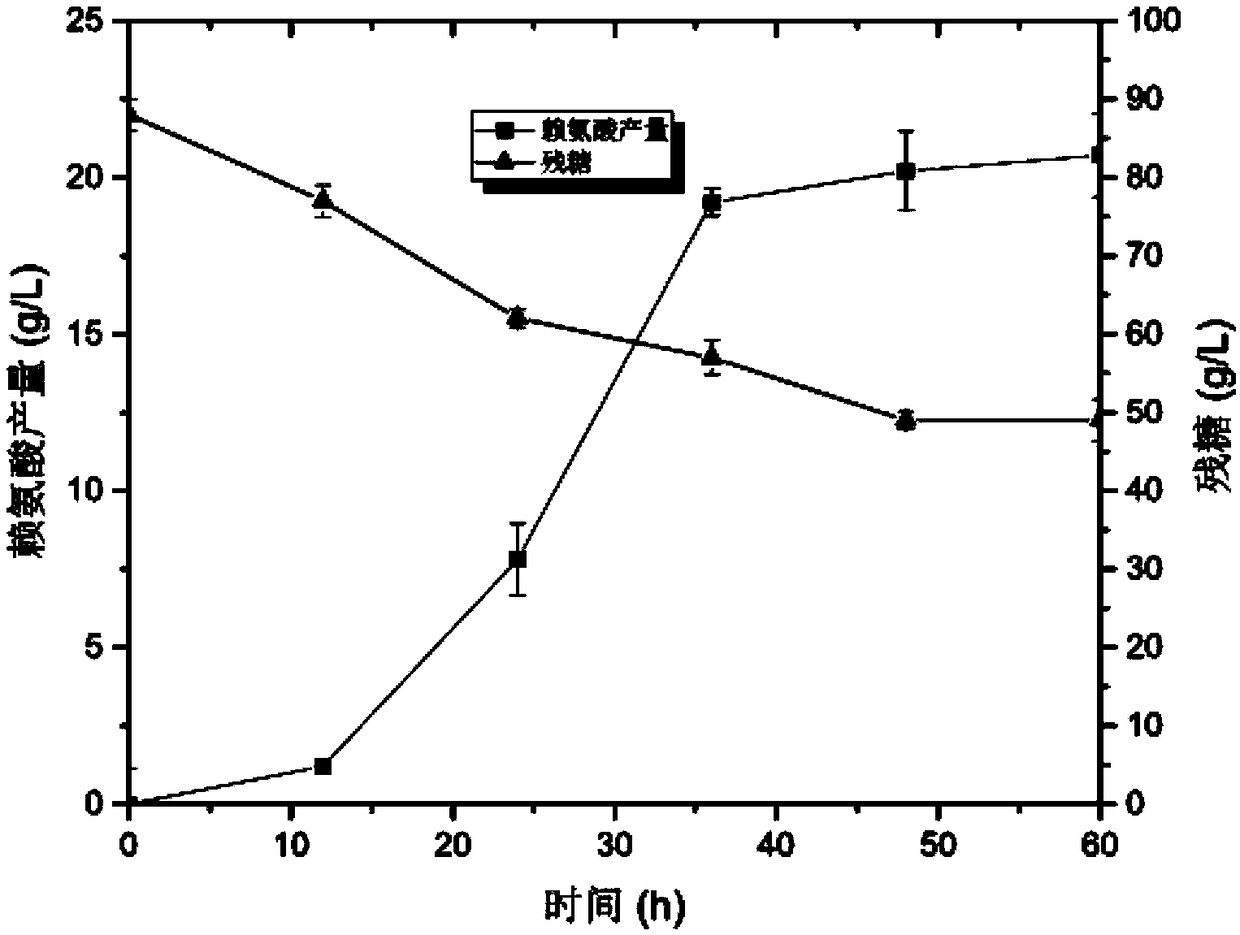Recombinant corynebacterium glutamicum in high L-lysine yield and construction method thereof
A technology of Corynebacterium glutamicum and its construction method, which is applied in the field of Corynebacterium glutamicum engineering bacteria and its construction, can solve problems such as doubts about the use of antibiotics, and achieve the effects of simple construction method, good application prospects, and reduced accumulation
- Summary
- Abstract
- Description
- Claims
- Application Information
AI Technical Summary
Problems solved by technology
Method used
Image
Examples
Embodiment 1
[0034] Construction of embodiment 1 recombinant fragment
[0035] The artificially synthesized nucleotide sequence is shown in SEQ ID NO.1 as the encoding gene gapC of glyceraldehyde phosphate dehydrogenase. According to Corynebacterium glutamicum ATCC13032 genome DNA sequence information, design primer gapC-1-F, gapC-1-R, gapC-3-F and gapC-3-R (see table 1), use above-mentioned primer to get from glutamic acid The homology arm gene sequences on both sides of the insertion position of gapC were amplified and inserted into the genome of Corynebacterium CICC 23604, and the obtained three amplified fragments were fused by fusion PCR technology to obtain the recombinant fragment GA1.
[0036] According to the genome DNA sequence information of Corynebacterium glutamicum ATCC13032, design primers thrB-1-F, thrB-1-R, thrB-2-F and thrB-2-R, use the above primers from the genome of Corynebacterium glutamicum CICC 23604 800 bp of homologous arm gene sequences on both sides of the thrB...
Embodiment 2
[0039] The construction of embodiment 2 recombinant plasmids
[0040]According to the vector pEC-XK99 sequence information, design primers ztgap-F, ztgap-R, ztthr-F and ztthr-R, use the above primers to carry out PCR, obtain the linearized vector pEC-XK99-G containing sgRNA respectively (nucleotide sequence As shown in SEQ ID NO.3) and pEC-XK99-T (nucleotide sequence shown in SEQ ID NO.4), they were ligated with the recombinant fragments GA1 and TH2 respectively to construct recombinant plasmids. After Eco32I, XmaJI double enzyme digestion verification and sequencing, it was confirmed that the recombinant plasmids pEC-XK99GA1 and pEC-XK99TH2 were successfully constructed.
Embodiment 3
[0041] The construction of embodiment 3 recombinant GA1 fragment Corynebacterium glutamicum
[0042] The pFSC plasmid containing the cas9 protein (nucleotide sequence shown in SEQ ID NO.5) was transformed into Corynebacterium glutamicum CICC 23604. The successfully transformed recombinant Corynebacterium glutamicum was screened with a kana resistance plate and named CGC9, and then the recombinant plasmid pEC-XK99GA1 was transformed into Corynebacterium glutamicum CGC9, and the expression of glyceraldehyde phosphate dehydrogenase derived from Acetobutylicum was obtained. The primers gapC-2-F and gapC-2-R were used to select the transformants for colony PCR, a 1005bp band appeared, and the recombinant Corynebacterium glutamicum was successfully constructed, named CGC9-EGA.
PUM
 Login to View More
Login to View More Abstract
Description
Claims
Application Information
 Login to View More
Login to View More - R&D
- Intellectual Property
- Life Sciences
- Materials
- Tech Scout
- Unparalleled Data Quality
- Higher Quality Content
- 60% Fewer Hallucinations
Browse by: Latest US Patents, China's latest patents, Technical Efficacy Thesaurus, Application Domain, Technology Topic, Popular Technical Reports.
© 2025 PatSnap. All rights reserved.Legal|Privacy policy|Modern Slavery Act Transparency Statement|Sitemap|About US| Contact US: help@patsnap.com



